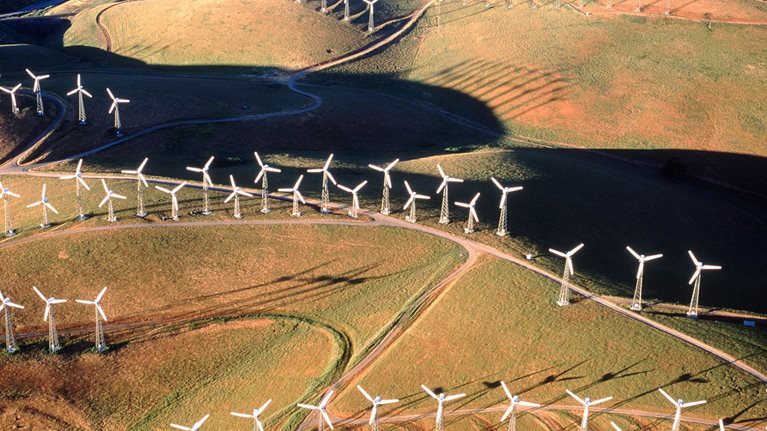The tragedy of the COVID-19 crisis has taken much attention away from the threat of climate change as institutions have devoted themselves to safeguarding public health. Severe job losses and revenue declines in some sectors have also compelled policy makers to mount an unprecedented financial response.
Important as it is to repair the economic damage, a swift return to business as usual could be environmentally harmful. After the 2007–08 financial crisis, the economic slowdown sharply reduced global greenhouse-gas emissions in 2009. But by 2010, emissions had reached a record high, in part because governments implemented measures to stimulate economies, with limited regard for the environmental consequences. The danger now is that the same pattern will repeat itself—and today the stakes are even higher. The period after the COVID-19 crisis could determine whether the world meets or misses the goals of the 2015 Paris Agreement, which calls for limiting global warming to well under 2°C above preindustrial levels.
Achieving those goals is a distinct possibility. A low-carbon recovery could not only initiate the significant emissions reductions needed to halt climate change, but also create more jobs and economic growth than a high-carbon recovery would. Research suggests that many low-carbon programs stimulate growth and create jobs as effectively as—or better than—environmentally neutral or harmful programs. In a survey, more than 200 economists and economic officials said that green economic-recovery measures performed at least as well as other measures did. An econometric study of government spending on energy technologies showed that spending on renewables creates five more jobs per million dollars invested than spending on fossil fuels.
In assessing and prioritizing recovery measures, policy makers may wish to balance several factors.
Socioeconomic benefits
These can be assessed by various criteria, including the number of jobs created per sum of money spent, the GDP or gross-value-added (GVA) multiplier, or the benefits to particular population segments, sectors, or geographies. The last consideration may be especially important, for COVID-19’s economic fallout has landed unevenly.
Climate benefits
A recovery measure’s decarbonization effect can be gauged by tons of greenhouse gases prevented (or removed) per year or by the ability to enable other carbon-reducing changes. Reinforcing the energy grid, for example, promotes more distributed microgeneration, which can cut emissions.
Time frame for measure to take effect
Certain measures have a more immediate effect on job creation and GDP growth; for example, programs to construct bicycle lanes can ramp up and create jobs quickly. Other options take longer to play out. Big infrastructure projects require extensive planning before economic activity starts in earnest.
Time frame in which carbon emissions are reduced
Some recovery measures, such as efforts to improve industrial efficiency, can lower emissions in the near term. Measures to support the development of low-carbon technologies may take longer to make a difference—though their cumulative emissions-reduction effects can make innovation a valuable element of recovery portfolios.
Feasibility
The ease of implementing recovery measures also matters. Construction programs, for instance, might require training or reskilling large numbers of workers. Expansions of renewable-energy capacity might proceed slowly until regional supply chains are more developed. COVID-19 also introduces new feasibility issues, such as the need to maintain physical distancing.
All these factors matter not only when governments assess individual recovery options but also when they assemble them into a package. Options that quickly put people to work might be attractive, but not all boost employment for long. Sustained growth might call for projects that create jobs for years to come, even if they require extra time to ramp up. A mix may provide the best employment outcomes. Similarly, policy makers might combine some measures that cut greenhouse-gas emissions in the near term with others that reduce them after several years.
Our analysis of nearly 50 measures across four sectors in one European country illustrates the possibility of assembling a balanced, effective low-carbon recovery program. We based estimates of the gross-value-added (GVA) multipliers of each potential measure on those observed for similar activities in major EU economies. Job-creation potential was estimated through regression analysis. To gauge each measure’s decarbonization impact, feasibility, and fit with the skills of the workforce and the needs of individual sectors, we drew on expert interviews and academic research.
This approach yielded a list of 12 feasible recovery measures with strong socioeconomic benefits (including multiregional job creation) and decarbonization effects in the near, medium, and long terms. These run the gamut from improving energy efficiency in homes and industrial facilities, to reinforcing the power grid to support widespread electrification and building out wind- and solar-power generation capacity, to expanding bus rapid transit projects and scaling up electric-vehicle manufacturing.1
According to our analysis, this recovery package would deliver substantial economic and environmental returns. By our estimates, deploying €75 billion to €150 billion would produce €180 billion to €350 billion of gross value added, create up to three million new jobs—many in sectors and demographic categories where jobs are highly vulnerable—and support a 15 to 30 percent reduction in carbon emissions by 2030 (exhibit).

It now appears that recovery from the COVID-19 economic crisis will require programs to last for months or even years. Those coming months and years will also be a decisive time for efforts to keep global warming below 2°C. Low-carbon recovery measures can help policy makers fulfill both needs at once—but the clock is ticking. This is the pivotal moment for policy makers to unite their economic and environmental priorities to improve and sustain the well-being of individual citizens and of the planet as a whole.
This article is adapted from a longer version, How a post-pandemic stimulus can both create jobs and help the climate.


